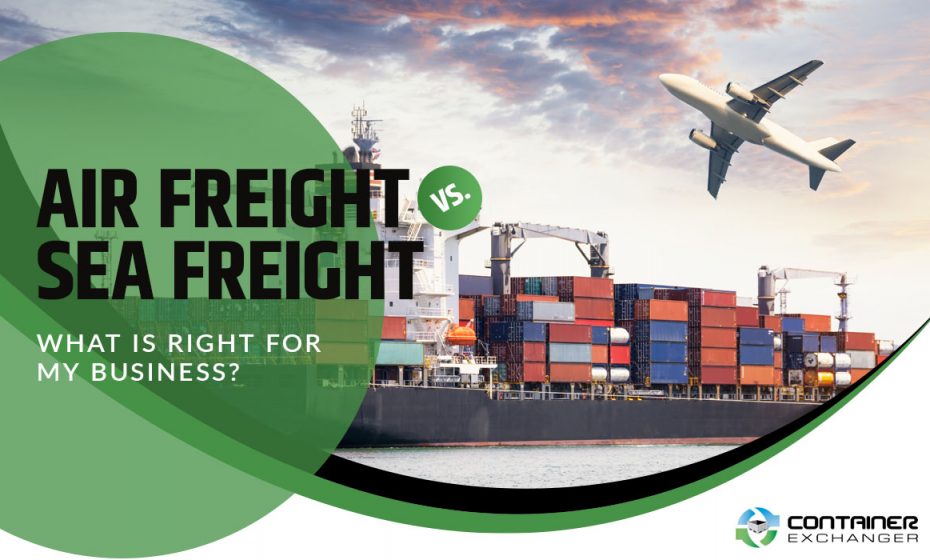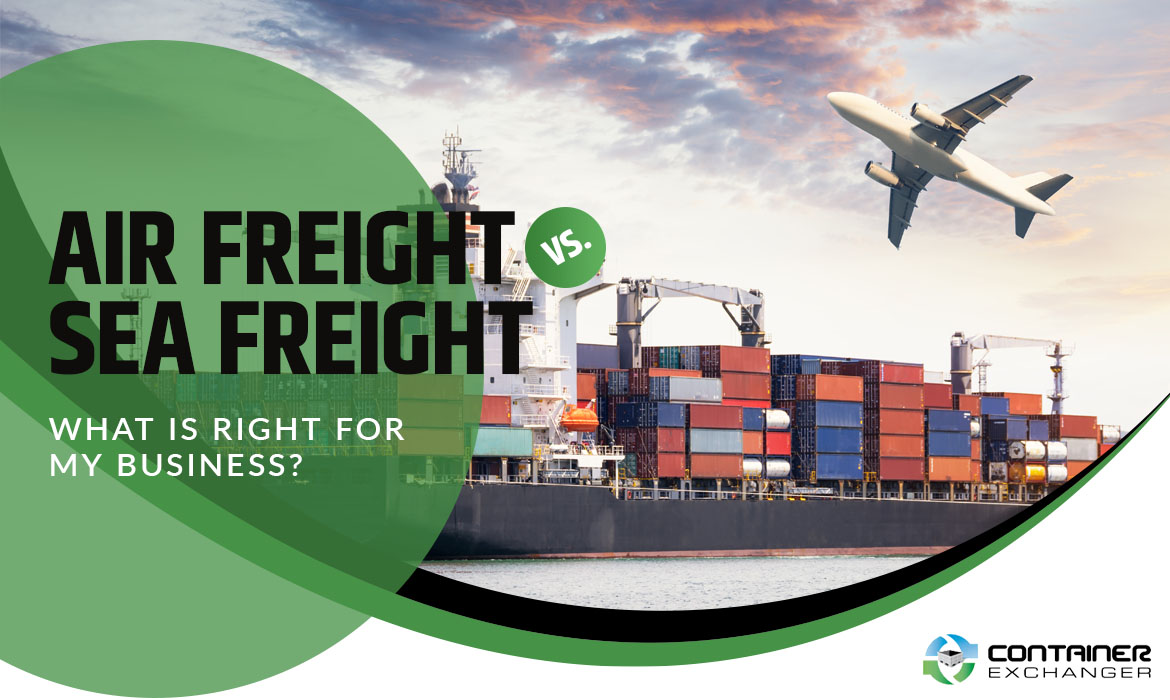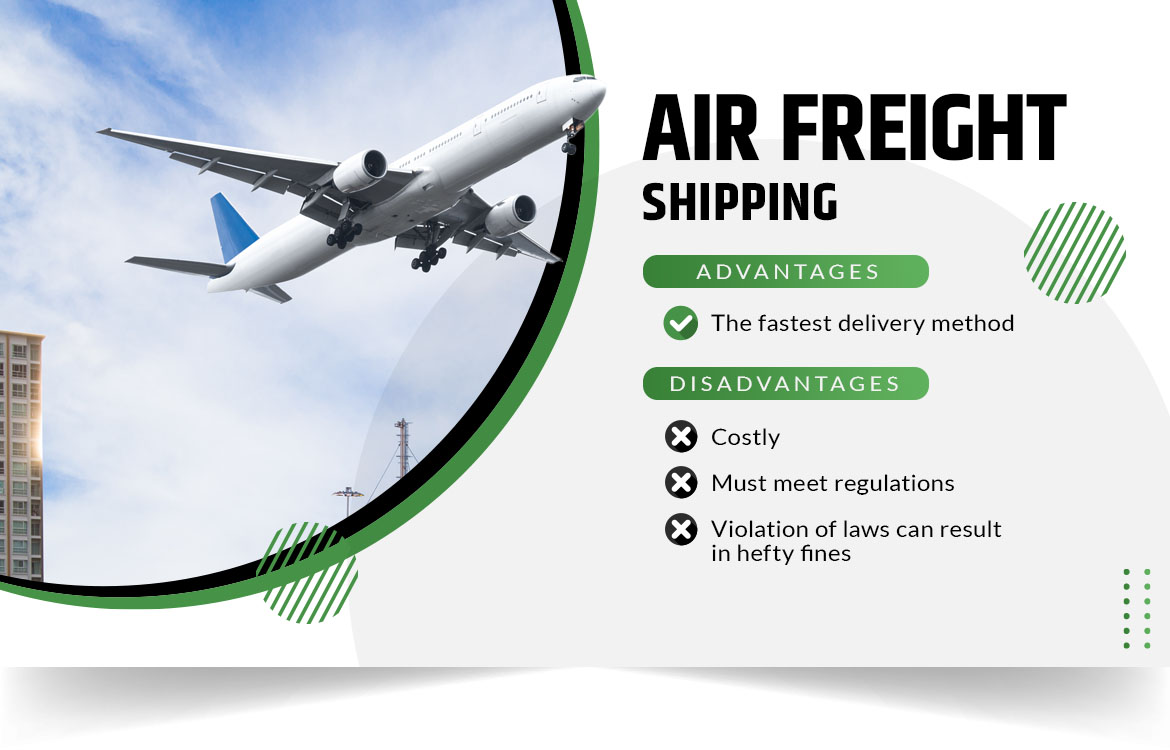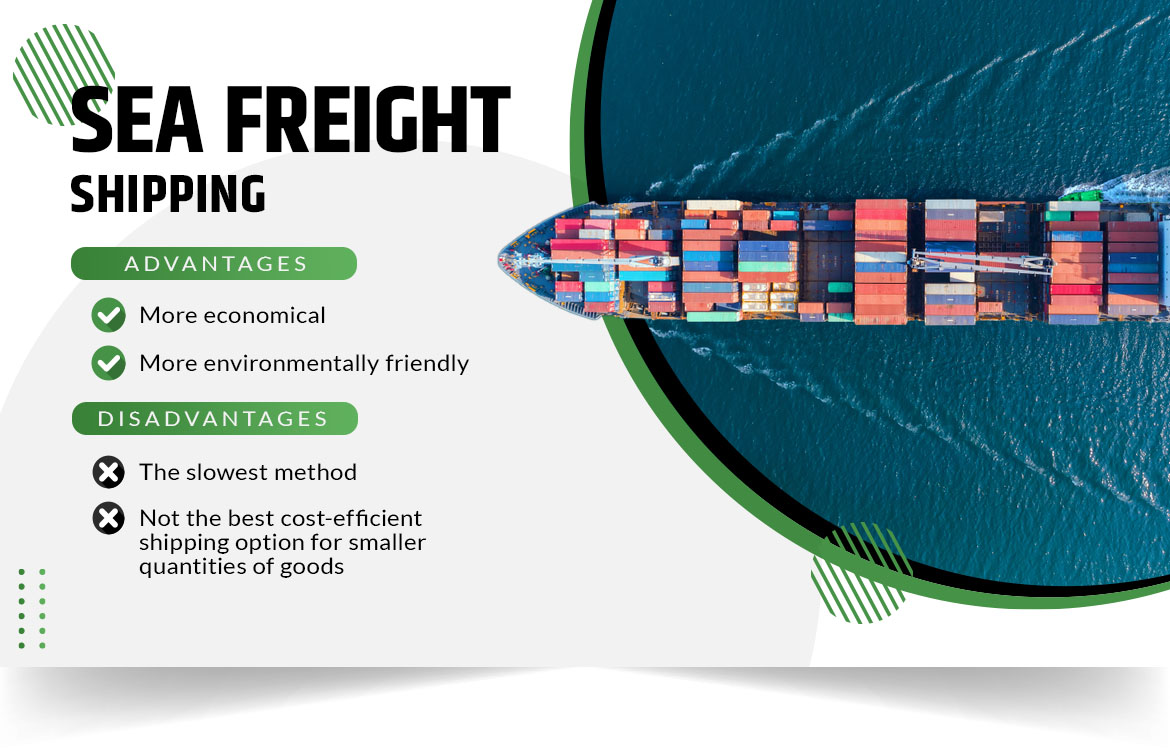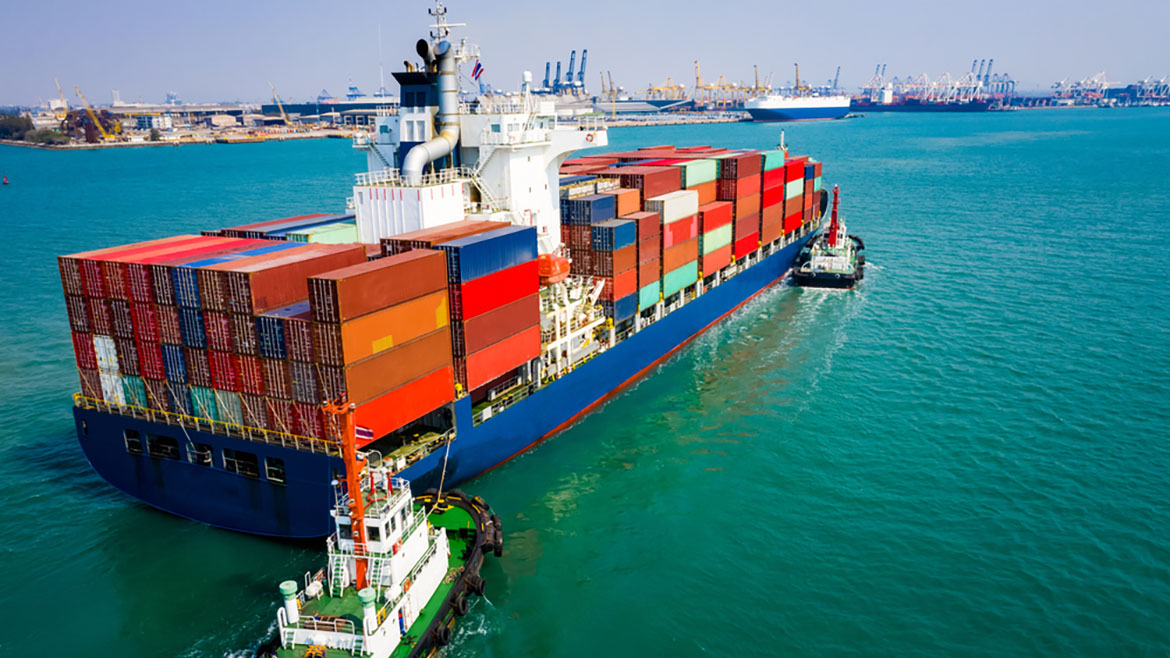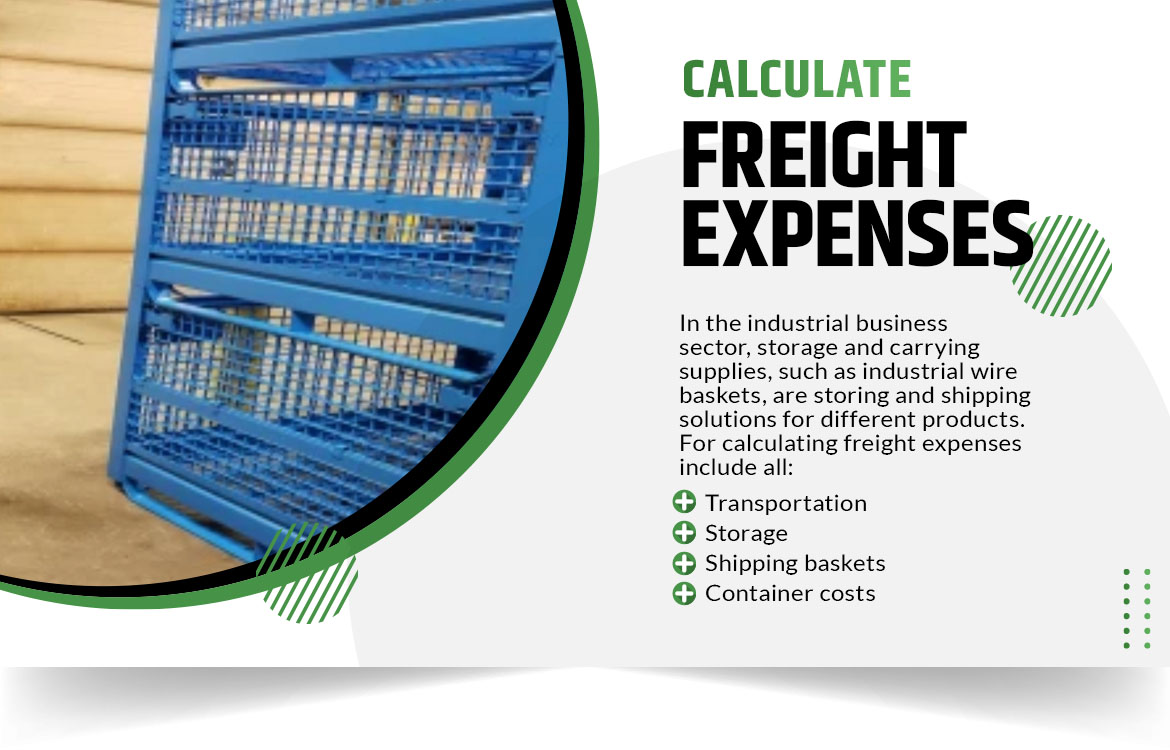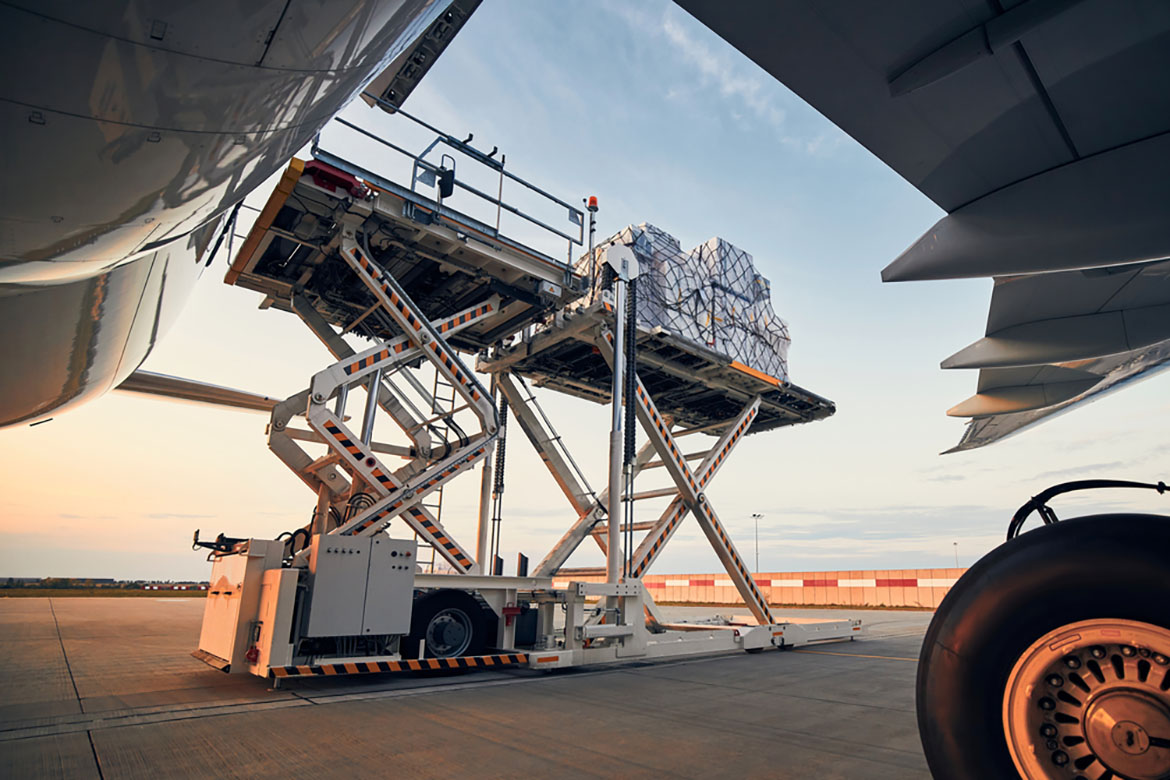Which shipping method is better for your business, air or sea freight? To determine this, you must understand the differences between the freight methods, or the logistics can be problematic. Some of your problems may include meeting delivery timelines and higher shipment costs. You also may run into issues with not using the right pallet container to ship items.
So, before selecting a shipping method, you’ll need to know more about them. To help you with this process of understanding the difference between air freight vs sea freight, we’ll discuss things like the meaning of each, the advantages and disadvantages of each shipping method and how freight carriers bill shippers.
What Is Air Freight?
Air freight, or air cargo, is a transportation method for shipping goods and materials through air carriers. It is the fastest delivery method compared to sea freight transport. Air transporters offer two types of air cargo solutions, general and special.
For your valuables in pallet containers, including electronics or pharmaceuticals, general cargo is the proper shipping solution. Use special cargo if you are shipping goods requiring certain conditions. These may include temperature or air control or protective packaging or storage. You can also use special cargo for shipping hazardous goods or livestock.
In the U.S. and other countries, national and international laws regulate the shipping of hazardous products. Businesses in the industrial industry must follow federal regulations to transport by air, ground or ocean.
If you work in this sector, there are strict labeling and packaging requirements to meet before carriers will accept your materials and goods. For example, companies shipping chemicals or liquids, such as cleaners or beverages, must use a durable IBC tote.
Products Considered Dangerous and Hazardous
- Biochemicals
- Lithium batteries
- Firearms
- Explosives
- Propane cylinders
- Aerosols
- Paints
- Pesticides
- Medical waste
- Dry ice
- Fire extinguishes
- Ammunition
Advantages and Disadvantages of Air Freight
Among the transportation methods, including ocean and ground, air freight is the fastest. Quick delivery is one of the best benefits. However, shipping by air is costly, and shipments must meet FAA (Federal Aviation Administration) and DOT (Department of Transportation) rules and regulations. Violation of federal or international laws can result in hefty fines and penalties.
What Is Sea Freight?
Sea freight is a transportation method for shipping large quantities of products to countries overseas using cargo or carrier shipment. You must purchase a container to pack your products or materials before loading them onto the ship.
If you do not need a full container, there is another option. Share a container with another shipper with the LCL (less than container load). Other options are RORO (roll on/roll off) and dry bulk shipping.
With RORO, your shipment remains in a vehicle that drives onto and off the cargo ship. Dry bulk comprises items that travel in the ship’s hole rather than a container. Examples include grains and natural resources, such as coal and iron ore.
Advantages and Disadvantages of Sea Freight
Comparing sea freight to other shipping methods, it is more economical and environmentally friendly. The method is the best solution for transporting goods and materials globally. For our environment, it is carbon-efficient.
On the downside, sea freight is the slowest method to deliver heavy, large items. It is not the best cost-efficient shipping option for smaller quantities of goods. You may pay more than having your shipment transported by air.
Importance of Freight Management
If your company is in its early startup stages, hire a qualified freight management team. Your team members should include a manager and trained logistic employees. Continuous employee training is necessary for helping ensure your business is meeting regulatory guidelines for shipping by air or sea freight.
Freight management ensures your shipment reaches its destination on time. Your manager should have the skills to negotiate prices with air carriers and sea freight providers. Having a managing team for logistics can help reduce the problems associated with international shipping.
Besides adhering to regulations, freight management must concentrate on cost efficiency and safe handling of goods. Air carriers have rules for handling products while sea freight providers use containers for protection. Avoid damages to your products by ensuring proper packing of the cargo.
Understanding How Freight Carriers Bill Shippers
How do you determine air freight versus sea freight costs? Carriers charge by the weight or size of your shipment to calculate the transportation cost by air, sea, or ground. Fees for warehouse storage at the carrier’s facility are additional charges added to the shipper’s bill.
Costs for Air Freight
When shipping your goods by air, carriers consider three factors to assess costs: shipment type, destination and delivery timeline. Impacting your freight cost includes the size, weight and special requirements for cargo shipping. Your delivery location and shipping from an international or a local airport can influence freight expenses. For calculating the weight, carriers use metrics by combining the weight and size of the products or materials.
Costs for Sea Freight
With sea freight, the shipment weight is not a factor. Ocean freight carriers bill shippers by containers, FCL or LCL. A flat rate is a charge for a full container, whereas the less than container loads receive a billing by cubic meter. Warehousing is another cost that is usually more expensive than storing goods in an airport warehouse.
Shippers must secure products in a metal bin with a lid for travel and storage. Storage bins are containers for protecting fragile and luxury items during transit. Companies in the automotive, manufacturing and retail industries should use a durable container when shipping hazardous materials, valuables, delicate items, and dangerous goods. Use a lock for additional security.
Shop for a Metal Bin With Lid!
How to Know What Is Right for You
For heavier, larger products in high volume, sea freight is a better option for you. If there is a rush, you may want to consider air freight. However, the cost can be expensive.
Selecting the appropriate shipping method will depend on various factors. The content you send and the destination are significant in determining the shipping method that’s better for you. Although air freight is more costly, warehouse storage is cheaper than sea cargo.
In the industrial business sector, storage and carrying supplies, such as industrial wire baskets, are storing and shipping solutions for different products. For calculating freight expenses include all transportation, storage, shipping baskets and container costs.
You should select an experienced employee at your business to manage your shipping department and perform ongoing analysis. Utilizing both air freight and sea cargo may be advantageous if you move your products nationally and internationally. Cost and timely delivery are the main factors to consider in determining which freight method is appropriate for your business.
What You Need to Know About National and International Regulations
Shipping dangerous goods overseas by air or sea freight can get complicated when it is time to go through customs. The FAA, IATA (International Air Transport Association) and DOT have regulations in the industrial and chemical industries.
You must secure your packaged products in safe and secured bins or containers by law. Failure to do so can result in fines or rejection to ship your goods by air or sea. Avoid such situations and ensure you have locks on the containers for security.
Various laws restrict particular products from entering a country. Learn as much as possible about shipment guidelines for easier processes. Packaging, labeling and container requirements are complex. It may be best to appoint someone within your organization to handle meeting significant governmental regulations.
Shipments by air have the strictest rules and regulations, with the FAA banning certain products. For example, you cannot ship explosives, weapons and flammable objects or liquids.
With both air and sea freight, there are benefits and disadvantages. You will need to weigh your options, especially considering things like high fuel costs. Cost efficiency is something you must focus on to reduce shipping expenses.
Conclusion
Use the information in this air freight versus sea freight guide for establishing freight management and selecting the proper shipping method. If you want a speedy delivery, ship by air. Choose sea cargo for shipments that do not require rush deliveries. Not only should you choose the proper freight method for shipping your goods, but you’ll also want to work with a reputable company to purchase your transporting and storage supplies.
Image Credits
Bung Yudz/Shutterstock.com
Heleno4ka/Shutterstock.com
Aunging/Shutterstock.com
Suwin/Shutterstock.com
Studio concept/Shutterstock.com
MISTER DIN/Shutterstock.com
Jaromir Chalabala/Shutterstock.com
